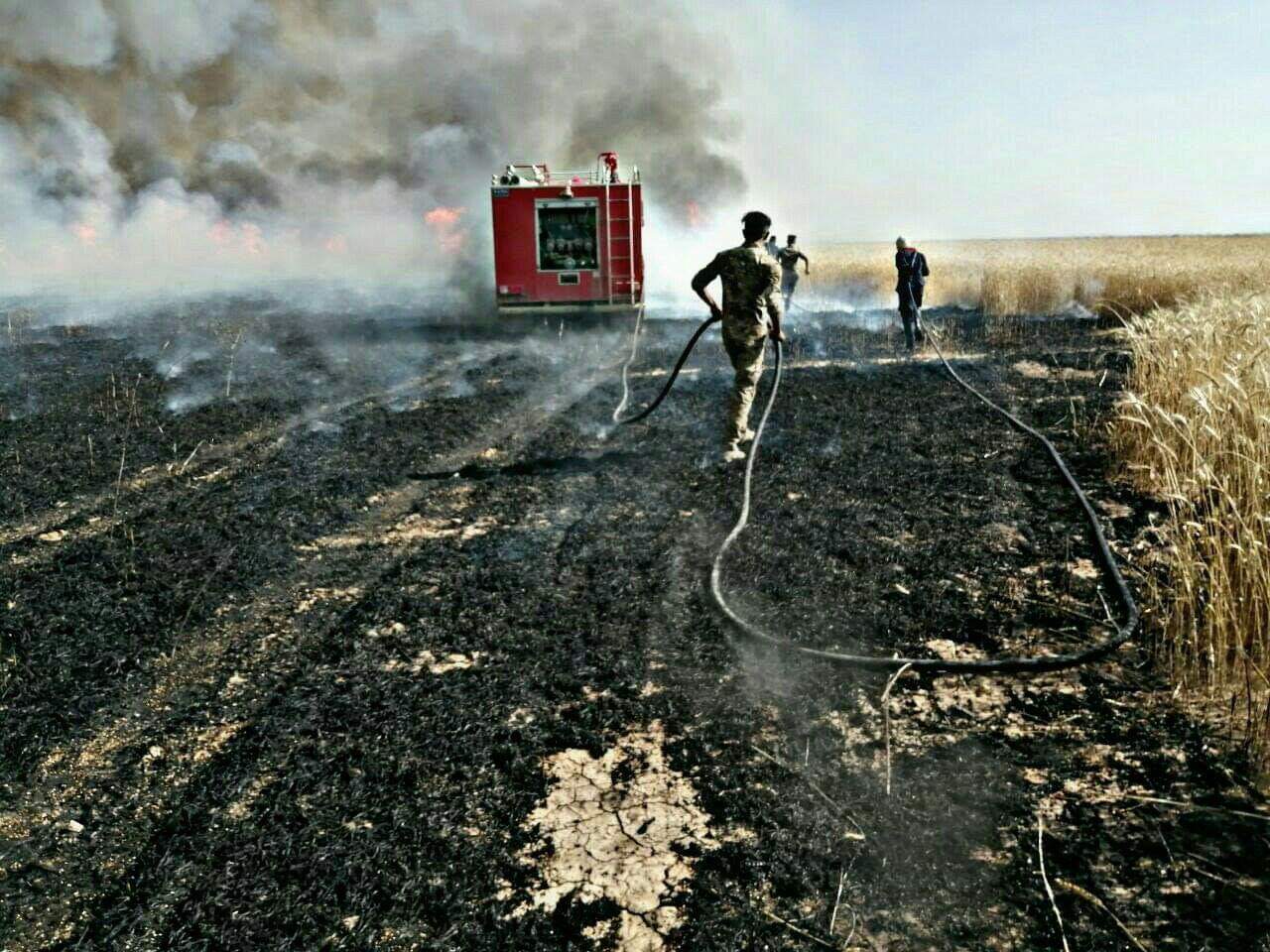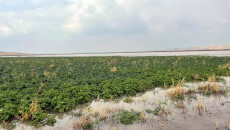Ten hectares (100 donums) of wheat were burned in Bashiqaa district of Nineveh Province Wednesday at night, May 28, total 15 hectares of wheat burned since the beginning of the harvest end of March and Early April.
There is no concrete information about the reason of the fire as investigations are under way but local authorities attribute it to the approaching summer and electrical circuit
Ghazwan Dawoodi, the director of Bashiqa district, told KirkukNow that a big fire broke out in the village of Urta Kharab and 100 donums of wheat burnt and fire brigade controlled the fire.
He stressed that "it was not deliberate," but said "civil defense teams and police are investigating the reason.”
“The cause of the fires is more natural. There are many lightning strikes this year... Electrical fault are another cause,” Ghazwan said.
On May 18, another piece of wheat burned in the same district before harvesting, Dawoodi said. “It was 50 donums burn due to fire malfunction.”
Every year, hundreds of hectares of wheat and barley are lost by burns before they are harvested in different parts of Iraq.
"Any farmer whose wheat or any other crop is burned or damaged, we will send a compensation report to the relevant authorities, but we do not know when they will receive the compensation and how much they will be paid," Dawoodi added.
The population of Bashiqa district (12 km northeast of Mosul) is estimated at more than 149 thousand people, and is inhabited by a mixture of Shabak, Ezidis (Yazidis) and Christians.
Nineveh Governorate is considered the first in potato production, as the area of land cultivated with this crop reached 2,900 hectares and its production reached about 124,000 tons. In the same year, the area of land allocated for potato cultivation throughout Iraq was more than 5,000 hectares, with a production exceeding 270,000 tons, according the Central Bureau of Statistics for 2022.
Despite the challenges posed by climate change and government routine, farming remains a vital sector of Iraq’s economy, providing livelihoods for millions of Iraqis and ensuring part of the country's food security.
About one-eighth of Iraq’s total area is arable, and another one-tenth is permanent pasture. A large proportion of the arable land is in the north and northeast, where rain-fed irrigation dominates and is sufficient to cultivate winter crops, mainly wheat and barley.
In 2022, the Ministry of Agriculture exported more than 30,000 tons of potatoes to the Gulf Countries GCC, yet at the same time did not stop importing the crop from some neighbor countries.
Iraq was self-sufficient in wheat during the three years before the war in Ukraine, with production of 4.7 million tons in 2019, 6.2 million tons in 2020, and about 4.2 million tons in 2021.
The Commerce Ministry expects farmers to produce seven million tons of wheat this year, which, according to the director general of the state-owned General Company for Grain Trading, "is enough to achieve self-sufficiency.”
He affirmed the company still has 1,7 million tons of wheat from last year to meet Iraq's needs for the next four months.






